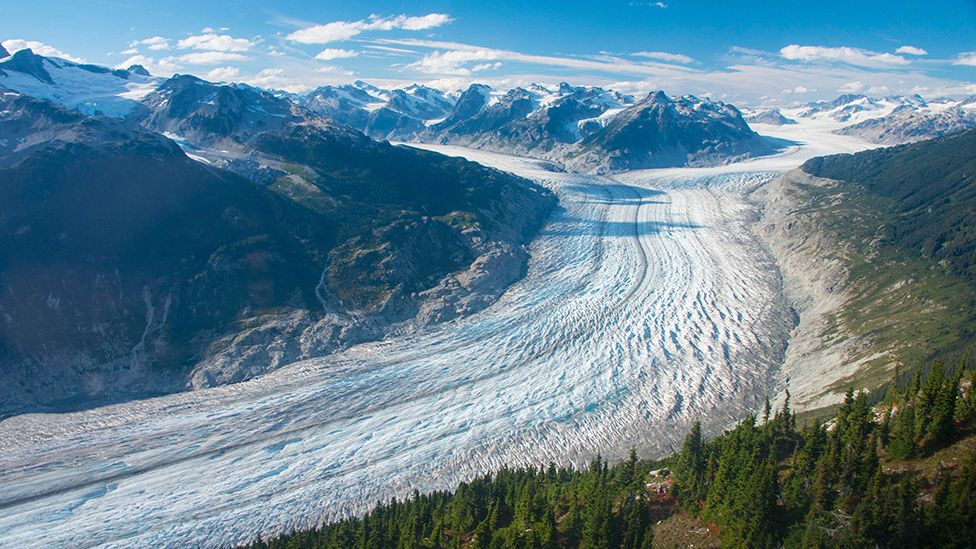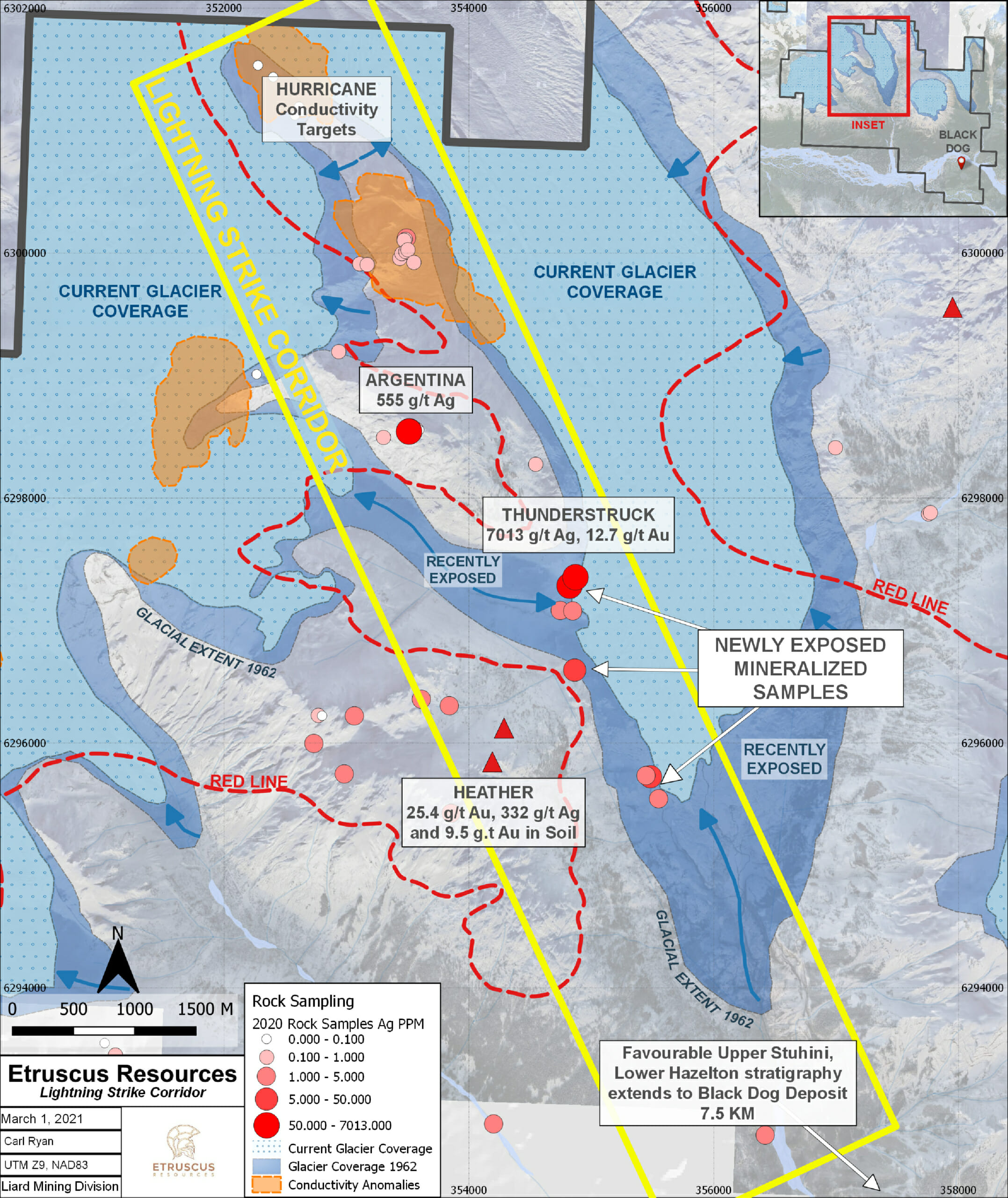Glaciers are Melting at a Faster Pace than Previously Predicted
According to a comprehensive new study in the Nature journal, the world’s glaciers are melting at an accelerating pace. According to researchers, these glaciers have lost almost 270 billion tonnes of ice a year over the past 20 years.

The researchers also estimate that this loss is accelerating. Here, they suggest that the rate of loss is growing by about 48 gigatons per year, per decade. It’s also estimated that the water produced by the glaciers’ melting accounts for about a fifth of global sea-level rise.
The researchers found them to have lost almost 270 billion tonnes of ice a year over the opening two decades of the 21st Century.
“Over the last 20 years, we’ve seen that glaciers have lost about 267 gigatonnes (Gt) per year. So, if we take that amount of water and we divide it up across the island of Ireland, that’s enough to cover all of Ireland in 3m of water each year,” he says on this week’s edition of Science In Action on the BBC World Service.
“And the total loss is accelerating. It’s growing by about 48Gt/yr, per decade.”
This is only one effect of global warming, and there are several more which all pose threats to the environment. So what are some of the effects of the melting of glaciers, and how do you make money from it?
The Effects of Climate Change
According to the World Economic Forum’s 2016 Global Risks Report, the failure to mitigate and adapt to climate change will be the most significant risk facing the world population in the coming decade. In fact, it rates this risk above weapons of mass destruction and water crises. The simple truth is climate change affects everything from the places people live to the water they drink and the air they breathe.
Extreme weather
When the Earth’s atmosphere heats up, it collects, retains, and releases more water. This causes changing weather patterns and makes wet areas wetter and dry areas dryer. Also, higher temperatures affect the frequency of many types of disasters like storms, floods, heat waves, and droughts. In turn, these events have devastating effects on human populations.
Dirty Air
When the Earth’s temperatures increase, the air gets dirtier as smoke and soot levels rise. In addition to this, allergenic air pollutants like mould and pollen increase as the Earth’s temperature rises.
Health Risks
According to the World Health Organisation, climate change is expected to cause about 250,000 additional deaths per year between 2030 and 2050. A variety of causes will cause these deaths.
When global temperatures increase, the number of fatalities and illnesses from heatstroke, heat stress, cardiovascular disease, and kidney disease also increases. In addition, as air pollution worsens due to climate change, so do respiratory health illnesses.
Another contributor to these increased deaths is extreme weather events like severe storms and flooding due to climate change. These events can lead to injury, water contamination, and storm damage that compromises basic infrastructure. As a result, it increases events like trauma, social unrest, lack of clean water, and urban crowding.
Rising seas
Because the Arctic is heating twice as fast as any other place on the planet, its ice sheets are melting into the seas. As a result, it is predicted that the world’s oceans will rise by one to four feet higher by the year 2100.
This rise in sea levels threatens coastal ecosystems and low-lying areas. As a result, island nations are especially vulnerable, as are some of the world’s largest cities, including New York, Miami, Mumbai, and Sydney.
Warmer Oceans
Oceans around the globe absorb between one quarter and one third of the world’s fossil fuel emissions. This has resulted in the world’s oceans now being 30% more acidic than they were compared to preindustrial times.
This acidification of the world’s oceans poses a severe threat to water life, especially organisms with calcified shells or skeletons like oysters, clams, and coral.
These rising ocean temperatures also alter the range and population of underwater species and contribute to coral bleaching events, capable of destroying entire reefs that support over 25% of all marine life.
Imperiled Ecosystems
Due to all the changes climate change causes, it’s putting pressure on wildlife to adapt to changing habitats. For example, many species are actively seeking out cooler climates and higher altitudes. It also results in many species altering their seasonal behaviors and adjusting their migration patterns.
These changes transform entire ecosystems and every living organism that depends on them. In fact, according to a 2014 climate change report, many species now face an increased risk of extinction, and one 2015 study showed that mammals, fish, birds, reptiles, and other vertebrate species are disappearing 114 times faster than they should be.
Canada’s Melting Glaciers
When it comes to global warming, Canada’s glaciers haven’t been spared from the effects of climate change. For example, the Castle Creek glacier in the Cariboo Mountains has receded over 200 m in the past decade. This means that the glacier has shrunk at a rate of roughly 15m a year.
This year, though, the melt rate accelerated dramatically. According to Brian Menounos, a geography professor and glacial researcher, the rate of melting has accelerated to about two and a half times its previous pace.
This is partly due to the effects of a warmer than average summer and a much warmer spring. Apart from the warmer weather, another contributor is warmer water temperatures in the Pacific Ocean.
And what’s happening at Castle Creek is the norm for glaciers across Western Canada. In simple terms, these glaciers are shrinking dramatically. As a result, it’s estimated that much of Western Canada’s 25,000 square kilometers of ice fields won’t last until the end of the century.
One Small Silver Lining
If there’s one silver lining to the devastating effects that global warming has, it allows prospective miners to extract minerals from the Earth that were untouched and impenetrable for thousands of years.
Many of these glaciers are situated in an area known as the Golden Triangle in north-western British Columbia. According to mining companies in the area, it’s only been possible during the last 3 to 5 years to take advantage of shrinking glaziers. Because the permanent snowpack is no longer present on these glaciers, companies can now explore the area for mining.
This area has a world-class geological setting, and tapping into it will result in the opportunity to extract high-grade ore. As well, it will provide a lot of jobs and taxes for the province.
One company that stands to gain from this unfortunate phenomena of melting glaciers is Etruscus Resources (CSE:ETR). Etruscus Resources is sitting on a polymetallic deposit containing Gold, Silver, Copper, Lead and Zinc. Recent exploration has shown incredibly high grade grab-samples, interested 5.24% Copper, and identified 20 areas of interest within proximity to the “red-line”, with geological overlap with existing producers (some of which are monster mines). We recently published an update report on Etruscus which resulted in a market value of $1.50 using highly conservative estimates, and numerous assumptions of dilution. With the recent acquisition of GT Gold by Newmont, we remain bullish on ETR given that it is trading at a discount of almost 400%.

The Bottom Line
Climate change has had significant effects on the environment, the oceans, and the weather, amongst others. It will require a combined global effort to slow down the effects of global warming.
If there was one positive out of all the devastation, miners can now possibly take advantage of mineral deposits hidden for years under glaciers. As a result, when they mine these minerals, their profits will increase. Together with their earnings, their stock price will increase too. As a result, depending on how the situation develops, now may be a good time to invest in mining stocks.
